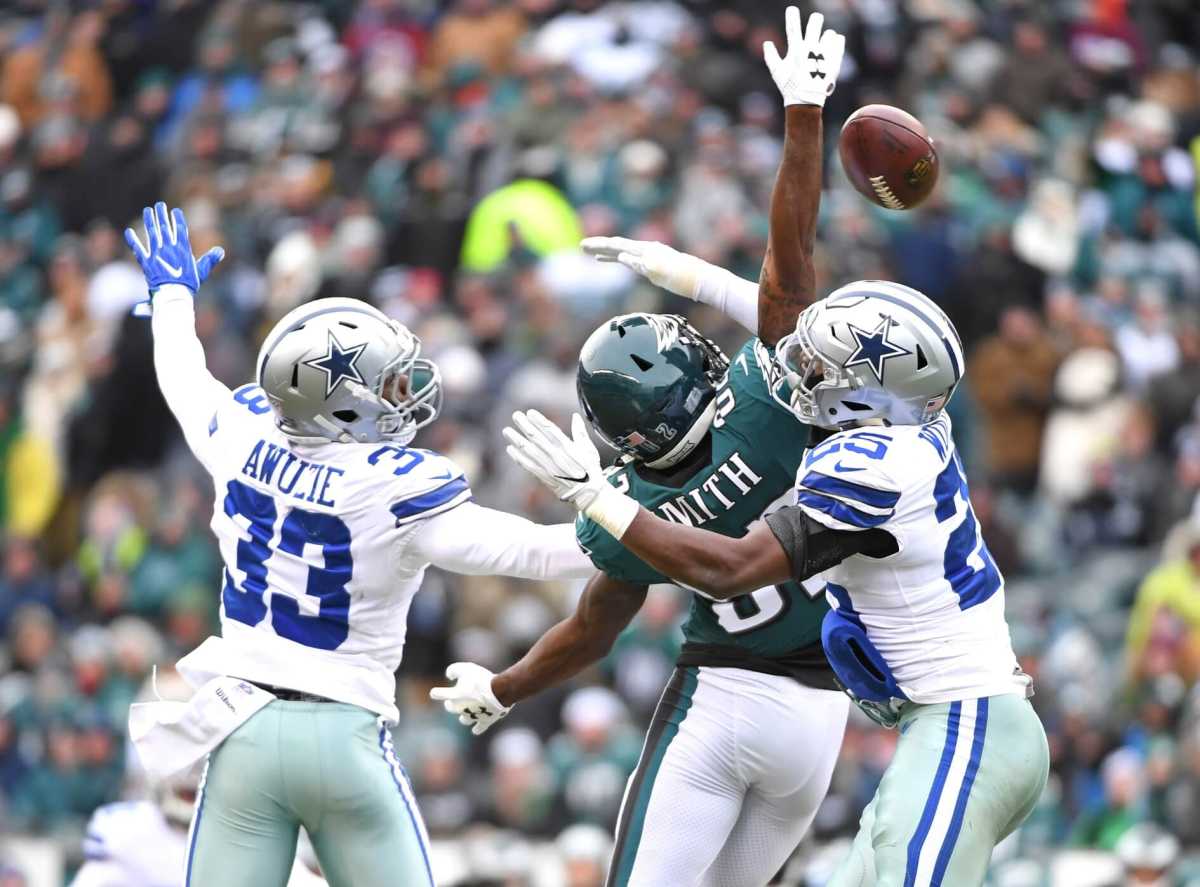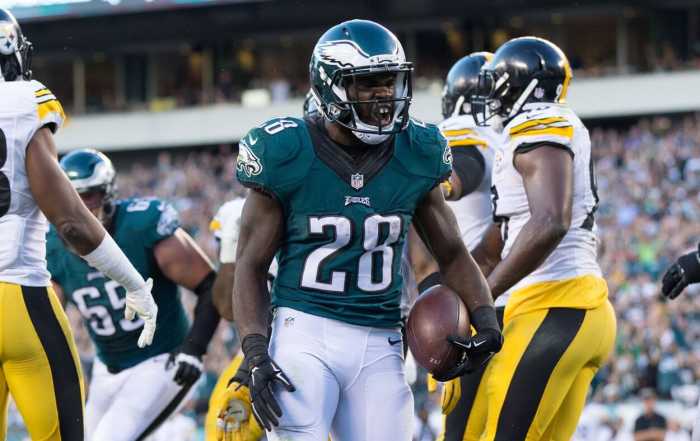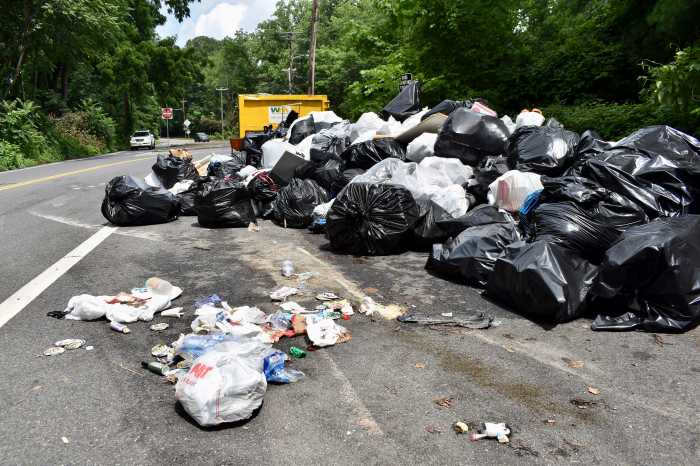In the final Cowboys-centered instalment of Know your Eagles Enemy, we will be taking a look at the Dallas secondary. How good can this young, unproven group be under a new, well-esteemed coordinator? Let’s find out.
Secondary
The Cowboys’ secondary was thrown into the fire in 2017 after a revamp and infusion of youth following the 2016 season. The group finished 11th against the pass last season, allowing 214.1 yards per game – down from 264.3 the year before. Schematically, Marinelli’s defense is notoriously soft in coverage, sacrificing underneath coverage for deep-ball defense. Accordingly, the ‘Boys allowed an opposing completion percentage of 66.37% (28th), and a league-high 371 receptions (tied with the Tampa Bay Buccaneers) in 2017. T
hat being said, the unit only allowed 32.4% of passes to go for first downs, good for 10th in the league. 2017 statistics paint only half the picture for this group leading up to a pivotal 2018 season. The secondary is young, with a majority of the starters under the age of 25 and poised to make a big leap. Nevertheless, this unit is not without holes. With a new DBs coach arriving in Arlington – one that hangs his hat on larger, longer corners – could we see a shakeup in starters?
Despite some promising play from smaller corners Anthony Brown and Jourdan Lewis last season, both seem to have fallen out of favor this off-season. Moreover, primarily aligning in a nickel formation, or a 3-2 big dime concept, this defense depends on stellar play from versatile slot corners and safeties. Dallas’ most recognizable formation, known as “Big Ruby”, deploys three defensive lineman, two linebackers, three corners and three safeties. Therefore, with former safety Byron Jones returning to his college position at corner, there are some questions about who will occupy the third safety position. Schematically, two areas where the Cowboys struggled were in zone coverage, and in disguising coverage.
Similar to the offensive line, the biggest change in the Dallas secondary comes with a new coach. Kris Richard becomes the new Defensive Backs Coach and Defensive Passing Game Coordinator after being relieved of his duties as Defensive Coordinator in Seattle. Due to the similarities in scheme shared between the Seahawks defense and Cowboys defense, Richard should fit right in. Both teams are low-blitz teams with bend-but-don’t-break secondaries, full of young DBs.
Seattle was a talented zone defense, and often disguised coverage. Although, everything is easier with 3 All-Pro caliber players. The new Cowboys coach was loved by players in Seattle, and multiple Seahawks questioned his release. Former Seahawks corner Richard Sherman praised his ability as a Defensive Backs coach stating: “he took a rag-tag bunch of DBs in 2011 and made them perennial All-Pros and Pro Bowlers”, per Herald Net. The Cowboys are hoping he can replicate his success with their stable of unproven, but talented young corners. Multiple articles mention the fact that Richard was the only DC fired under Head Coach Pete Carroll, and while this may point to some disaccord and speak to Richard’s ability as a full-time Coordinator, he should fare better returning to his former role as a DBs coach. It must also be noted that, while he had great success grooming young corners on the west coast, he won’t have the breadth of talent at safety as he did in Seattle. Perhaps he can turn Xavier Woods into a poor-man’s Kam Chancellor, but Jeff Heath is no Earl Thomas. Richard preaches aggression and finds himself in a room stocked with capable athletes.
Jourdan Lewis was selected by Dallas in the third round of the 2017 NFL Draft. There is some speculation that he fell in the draft due to an ongoing domestic violence investigation, which has since been resolved. Many draft sources say that he may have been a first round pick, had it not been for his size. He measures 5’10”, 188 pounds and ran a 4.54 second 40-yard dash at the NFL Combine. Obviously, you’d appreciate a better 40 time for a corner of his size, and his long speed has come into question. His skill set matches what you’d expect from a slot corner, but he manned the outside last season. He is a competitive, quick-twitch corner with good ball skills and sticky coverage. Lewis’ shortcoming is his size. He is not an overly strong tackler but can be counted on for support in the run game. Overall, he had an impressive first season. His stock consistently trended upwards after making a statement in his debut, registering six tackles and an interception against the Broncos in week two. He may be the ‘Boys best corner, but the question with Lewis heading into the 2018 season is where he will fit. He doesn’t exactly fit the mold of Kris Richard’s prototypical corner. Despite the coach insisting, “he is an exception . . . he’s got good enough length and he’s quick,” Lewis has been taking snaps with the number two defense this off season but may find himself in a battle for snaps at slot corner with Anthony Brown.
Jourdan Lewis plays the double move nicely and is in perfect position to make a play on the ball. Eli throws it right to him. pic.twitter.com/DDyrfFIMni
— Connor Livesay (@ConnorNFLDraft) May 21, 2018
Chidobe Awuzie was Dallas’ second round pick from 2017. Listed at 6’0” 202 lbs, Awuzie is a larger corner than Lewis. He also recorded a faster 40-yard dash time at 4.43 seconds. Held back by a hamstring injury throughout last season, Awuzie definitely looked the part when he did see the field. He was one of the major reasons Dallas was 8th best in the league when covering third receivers. On 192 coverage snaps, he allowed only 19 receptions for 133 yards on 29 targets. For those of you counting at home, that amounts to 7.0 yards per reception and 0.69 yards per coverage snap. Both of these tallies are the best ever recorded for a first-year corner. This has to be taken with a grain of salt as the runners up are Cortland Finnegan and Brian Poole – both serviceable, but not elite corners. Nonetheless, Awuzie performed exceptionally in his small sample size and will be looking to continue those numbers into 2018. So far this off-season, he has been taking starting corner reps alongside Byron Jones.
**GET FREE SHIPPING ON OFFICIAL EAGLES SUPER BOWL GEAR**
Dallas’ presumed slot corner for 2018, Anthony Brown will be looking to bounce back from a down year last season and return to the form he displayed in his rookie season. Brown was benched in week 13 following a turbulent first 11 games in which he was flagged 10 times – five for defensive pass interference. While it was quite obvious he was having a rough go of it, Brown was often used as a scapegoat for an all-around mediocre defense. He was often outworked, or out hustled in 2017, but has shown the ability to compete at an NFL level. Over the last five games of his rookie season, Brown allowed the fewest yards per coverage snap in the league. He’s very quick – posting the best 40-yard dash time of all corners at the 2016 draft: 4.35 seconds. Most importantly, he was flagged coming out of college as a talented zone defender, something the ‘Boys need more of in 2018. One thing his coaches will be looking for from him is consistency. Too often Brown was victimized due to lapses in judgement or concentration. The missed interception against the Eagles, video below, is a great example. He is a versatile piece which fits well schematically if he is able to regain his rookie form.
HOW pic.twitter.com/7LGMb0ETH1
— Cowboys Nation (@CowboysNation) November 20, 2017
Most people know Byron Jones from his incredible draft combine workout in 2015, which motivated the Cowboys selection of him at 27th overall. In 2018 he will transition from safety back to his former college position at corner. Last season he played a whopping 87.1% of defensive snaps at safety. While safety and corner positions are becoming more fluid and interchangeable, the vacated hole at safety will need to be filled. He’s making the move back for two reasons. Primarily, he wasn’t all that good as a safety. He relied too heavily on his athleticism, made too many guesses, and did not have the instincts of a natural safety. Byron wasn’t given much of a shot to grow into his role and it showed. However, the second reason for the move is that, physically, he is a picturesque model of a Kris Richard daydream.
Standing at 6’0” 2015 lbs, he is long, lean and can jump out of the building. He reacts quickly and has fluid hips. He was a much better safety when playing close to the line of scrimmage – lining up in man coverage, often against larger slot receivers and tight ends – something he’ll do much more of at corner. We’ll have to see how his long speed fares against faster outside receivers, although he did run a 4.36 40-yard dash at his pro day. Coming out of college, Jones was seen as a raw project-player, and with the constant moving of positions, his professional development may be caught by the wayside. On the contrary, perhaps a move back to his natural position will prompt a third-year leap and will allow him to take full advantage of his freak athleticism. So far this off-season it has been Byron and Chidobe Awuzie starting at outside corner positions with Anthony Brown in the slot. It will likely be Jones occupying one of the three safety positions when the defense shifts to Big Ruby.
There is a question of who will hold the other two safety positions come September. Presumably, Xavier Woods will be the team’s starting free safety. The Cowboys drafted him in the sixth round of last year’s draft. At 5’11” 197 lbs, Woods is slightly undersized, but plays physically. He is more of a “hitter” than a tackler and won’t always wrap when engaging the ball carrier. When he does hit you, you feel it. As a free safety, he plays better closer to the line of scrimmage and will have to work on his deep coverage, however he is young and will be given time to develop. He will have to hone his instincts and speed up his reaction time in zone coverage. In four starts last season (52.42% of defensive snaps), he totaled 42 tackles, three passes defensed, and one interception. Woods seems to be more than a serviceable starter but has yet to turn heads with his play.
It’s hard to get excited about a safety tandem of Xavier Woods and Jeff Heath, but Dallas fans will have to try their best to feign enthusiasm for the next few months. With Heath, what you see is what you get. Starting off as a special teams ace, he was moved to a full time starter last year after Dallas lost Barry Church to Jacksonville in free agency. He’s average athletically, has good instincts and won’t make too many glaring mistakes. He is also capable of making intelligent, reactionary plays in the secondary. However, in the first half of the season last year, Heath struggled mightily. He looked lost in coverage, missed tackles and too often took poor angles of pursuit. Needing some time to acclimate, he turned it around towards the end of the season. From weeks 13 to 16, Heath tallied 25 tackles, three passes defensed, two interceptions and a forced fumble. Those statistics amounted for almost half of his production all season (71 tackles, 5 passes defensed, 3 interceptions, 2 forced fumbles). Unfortunately, he never quite showed the flashes expected of a game changing safety. 2017 may have given us a glimpse of both Heath’s floor and ceiling.
Kavon Frazier is the third possible contributor in the Cowboys’ safety room. He stands at 6’0” 217 lbs and has the body of a seasoned NFL professional. The 6th round pick from 2016 cracked the rotation last year but played only 21.24% of defensive snaps. Where Frazier made his money was on special teams. Because he is a traditional box safety, he doesn’t really fit in a modern NFL defense – lacking versatility, quickness and cover skills. However, he is a very strong tackler and will come downhill in a hurry. As a safety, he is great in run support and flies to the ball like a hawk to its prey. Most of his shortcomings come from his lack of experience. He will regularly take bad angles, seeking out traffic, and will bite on head-fakes and double moves. He is not a talented zone cover guy and is a slow reactor in off-coverage. Coming out of college his skill set was compared to former Cowboy Barry Church, which points to what Dallas hoped his role would be when they drafted him. He has some definitive strides to make but looks poised to take a bigger role in 2018 should Jeff Heath continue to struggle. In the video below, at 1:08, you’ll notice his ability to read the play and react quickly.
Best Case: The key to this group is potential. Dallas has been stockpiling raw, malleable athletes waiting for a coach capable of unlocking their full ability as a unit. In this scenario, Kris Richard is that guy. Just like he did in Seattle, Richard uses his college playing experience and vast wealth of knowledge learned from Pete Carroll to coax out All-Pro efforts from under-the-radar players. The tutelage of Richard helps the entire unit improve their zone coverage and continue to grow in man coverage. The development of the young corners is aided by a veteran presence and consistent performance from Jeff Heath, who continues his upward trend that started late last season. Xavier Woods flies around all season, making tackles all over the field and making his presence felt. Kavon Frazier makes an impact in the run game and improves in coverage. He still can’t be counted on to man cover the top Tight Ends in the league, but the Cowboys don’t need him to. Byron Jones makes a seamless transition back to corner and makes life difficult for bigger receivers with his length and athleticism. Chidobe Awuzie is the rangy, shut-down, Richard Sherman-type of the group, proving sticky in coverage and physical in the run game. Don’t give me that look, its a legitimate possibility. The length of both outside corners immediately reduce the completion percentage of opposing quarterbacks and cut down on quick, high-percentage, underneath passes. Anthony Brown regains his rookie form and Jourdan Lewis continues to grow in his second season. The Cowboys are left with a log jam at corner and even field trade offers for the young Lewis. It is strange to say that in the best-case scenario either Brown or Lewis will be dealt, but it wouldn’t be surprising. There has been some speculation that should Brown have a good summer, Lewis might be traded before the season starts. It is more likely that Dallas holds onto him until injuries start to take their toll midway through the season. .
Worst Case: Kris Richard is not the key. Jeff Heath has another up and down season, looking like a career special teamer. Xavier Woods and Kavon Frazier lay big hits but don’t make big plays. Without the help of All-Pro safeties like he had in Seattle, Richard is unable to replicate his previous successes turning rag-tag into riches. Dallas’ decision to draft athletes over instincts catches up to them. Byron Jones has to hit the reset button and looks like a rookie corner. Awuzie can’t do it all by himself. Anthony Brown is no help and looks like last season’s version of himself. Jourdan Lewis just does not fit in Richard’s scheme and by the time he sees the field he is already too far behind to catch up. The Cowboys are last in opposing completions and are near the bottom in opposing completion percentage and quarterback rating. As a unit they continue to bend until they break. Tough match ups against Atlanta, Detroit, Houston (with Deshaun Watson returning), New Orleans and Philadelphia take their toll on the secondary.
Mandatory Credit: Eric Hartline-USA TODAY Sports


























